A detailed explanation of the dimensions of the Sun – complete with images: radius, diameter, mass, volume, classification as a yellow dwarf, comparisons to Earth, giants, Sirius, Arcturus, Rigel.
It is widely known, even among the youngest children, that the Sun is the largest entity in our solar system. However, it does not hold the top spot in terms of size when compared to other celestial bodies in the Universe. In fact, even within our own galaxy (the Milky Way), the Sun is considered to be of average size. The diagram below provides an accurate representation of the Sun’s size in relation to the planets in our solar system (including gas giants and Earth), as well as larger stars such as Sirius, Arcturus, Aldebaran, Betelgeuse, and VY Canis Majoris.
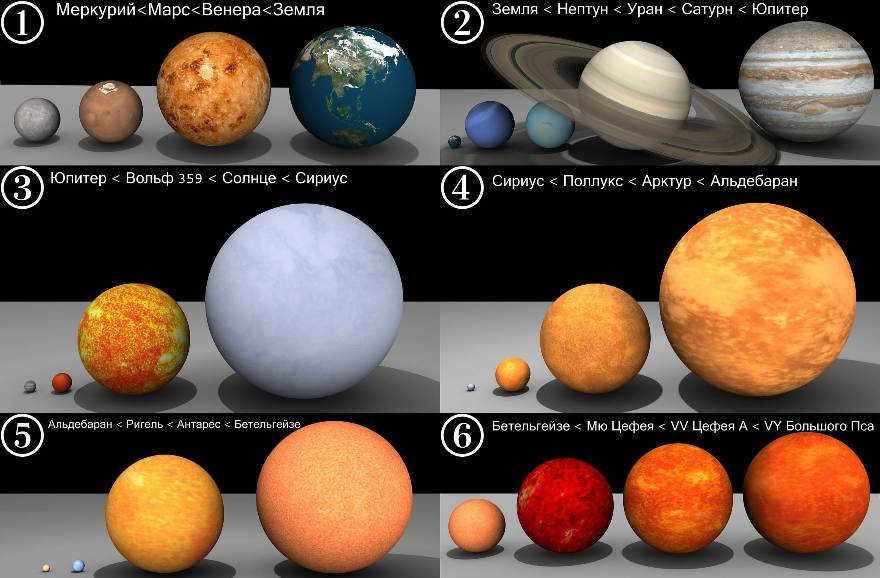
Comparative sizes of the Sun and other objects in our galaxy
Radius, diameter, and circumference
Parents or teachers at school may inform you that our star takes the shape of an almost perfect sphere. If we measure the diameters at the equator and poles, they vary by no more than 10 km. On average, the solar radius amounts to 696000 km and the diameter spans across 1.392 million km. To provide a visual representation for kids, you could imagine a line of 109 planets similar to ours. The circumference adds up to 4,366,812 km.
 Mass and volume
Mass and volume
Regarding the overall volume, it amounts to 1.4 x 10 27 cubic meters. To put it in perspective, you can tell children that the Sun can fit around 1.3 million Earths within its boundaries. The Sun’s mass is 1.989 x 10 30 kg, which is equivalent to 333,000 times the mass of the Earth. It’s worth noting that the Sun’s mass accounts for a staggering 99.8% of the entire mass of the system.
Yellow dwarf
The Sun should not be considered as the largest object in the Universe. Take, for example, the red giant Betelgeuse, which is 700 times the size of our star and shines 14000 times brighter.
We need to educate children about classifications. The Sun is classified as a G-type (dwarf star or yellow dwarf). Although it is predominantly white, it appears yellow when viewed through Earth’s atmosphere.
Comparison of sizes between the Sun and objects in our solar system
It’s crucial to understand that stars are not static in their dimensions and are continuously expanding. Researchers speculate that in another 5 billion years, the Sun will deplete its hydrogen reserve. Following that, the process of transforming into a new entity will commence. It will expand to the size of a red giant and ensnare the orbits of the planets (including Earth’s). Helium will heat up and fuse with carbon to generate oxygen. All of these elements will concentrate at the very core.
During the pinnacle moment, the outer layers will rupture, transforming into a planetary nebula. Merely the lifeless core (carbon and oxygen) will endure – a compact and luminous white dwarf star. And youngsters ought to be aware that it will be approximately the size of Earth.

What is the Sun like? We envision it as a colossal orb radiating heat, with perpetual explosions and an immense power emanating from it.
In actuality, the Sun is nearly a flawless sphere in form. Our perception proves to be accurate.

As you are aware, within the solar system, it stands alone as the largest star. However, when comparing it to other stars, our celestial body is of average size.
Furthermore, based on spectral classification, the Sun falls into the category of a yellow dwarf. This classification includes smaller stars that are part of the main sequence. Their primary energy source comes from the fusion of hydrogen into helium.
The Sun’s Dimensions in Numbers
To put it simply, the Sun’s equatorial and polar diameters are only a few kilometers apart. In other words, the distance from the center to the equator is nearly identical to the distance from the center to the poles.
It is important to note that the diameter is measured from the center to the upper layers of solar brightness (photosphere).
The average radius measures 696,000 km, and the Sun’s diameter is 1.392 million km.
Therefore, the Sun’s size is 109 times larger than that of Earth and 11 times larger than Jupiter (the largest planet in our solar system).
In the field of astronomy, the solar radius is used as a practical unit for comparison (along with solar mass and luminosity).

Will the Sun Expand in the Future?
It is indeed true that scientists predict that the Sun will grow larger over time.
The Sun experiences a constant cycle of contraction and expansion as a result of the opposing forces of nuclear fusion energy and gravity. The energy from nuclear fusion causes matter to move outward, while gravity pulls it inward towards the center.
The primary element in the Sun is hydrogen, which undergoes thermonuclear reactions to form helium. This process occurs continuously.
Every second, the Sun converts approximately 600 million tons of hydrogen into helium through its burning process.
After consuming all of its hydrogen, the Sun will commence fusing helium which will cause the surface to gradually expand and the temperature to decrease. This transformative process is expected to occur in approximately 5 billion years, resulting in the Sun’s evolution into a red giant where it will reside for approximately one billion years.
Eventually, following millions of years, the Sun will undergo a contraction and transform into a white dwarf.
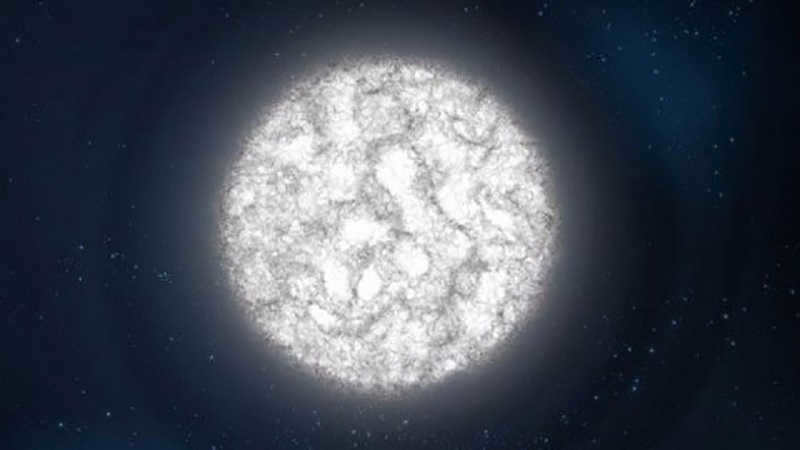
The apparent dimension of the Sun
When observed from the surface of the Earth, the Sun appears to have an angular dimension of approximately 0.53 degrees (31-32 minutes). Interestingly, the Moon has the same angular dimension. However, it is worth noting that the Sun is 400 times larger than the Moon but is also positioned 400 times further away from our planet. This relationship seems to be some kind of magical coincidence.
The Sun’s radius is 109 times greater than that of the Earth and 400 times greater than that of the Moon.
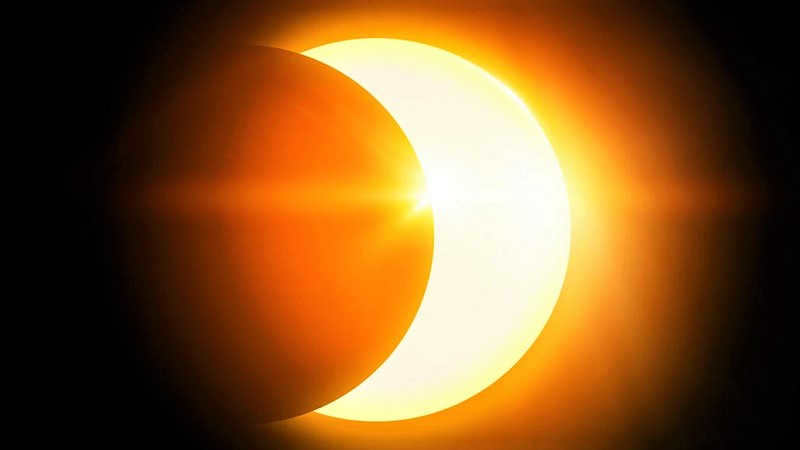

Thus, we have gathered knowledge about the dimensions of our star, the ratio of the Sun’s diameter to that of the Earth, and the future that scientists predict for it.
The Sun is an immense luminous sphere, emitting energy from hydrogen at its core. Hydrogen undergoes transformation into helium, and the resulting energy is emitted into the vastness of space. Throughout history, people have worshipped the Sun, recognizing its vital role in sustaining life on Earth.
Size of the Sun
Measurement
Our planet’s nearest star, the Sun (Helios), falls into the classification of “Yellow Dwarfs”. Unlike solid objects, the Sun lacks a solid surface. Its main layer, known as the photosphere, emits energy. Consequently, the measurement of the Sun’s size refers to the diameter of its photosphere.
Using a phenomenon known as “Bailey’s rosary,” scientists have been able to determine the precise diameter of the Sun in kilometers. These rosaries are the red dots that appear around the perimeter of the solar disk during an eclipse. By studying the position of these dots, astronomers have successfully measured the size of the Sun.
Through the analysis of historical data and ongoing modern monitoring, it has been discovered that the diameter of the Sun is not constant. For example, in the 17th century, the Sun was 2,000 kilometers wider than it is today. Astronomers have observed that the star expands and contracts within a span of 160 minutes. This expansion and contraction also affects the amount of energy emitted by the Sun during the same timeframe.
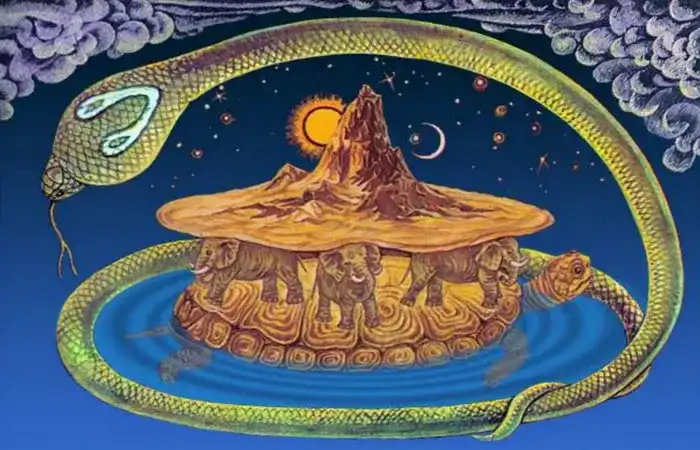
Measurement of the Radius
By observing the duration of solar eclipses and the movement of Mercury and Venus against the backdrop of the Sun, scientists were able to estimate the approximate radius of the star. It was found to be around 695,990 kilometers.
The use of instruments on board space stations allowed for more precise calculations. Researchers employed the method of helioseismology, studying the movement of f-waves on the Sun’s surface. This approach yielded a slightly different result – 300 kilometers less (695,700 km). The resulting discrepancy could have significant implications for the study of the Sun, including its composition and activity.
The radius of the Sun is consistent in all directions due to its spherical shape.
Comparison of celestial body sizes
In astronomy, the solar radius is used as a unit of measurement for the sizes of other cosmic objects:
- Polaris is 30 times the size of the Sun, equivalent to 30 solar radii.
- Compared to the Sun, our planet appears as a tiny dot. It is 109 times smaller in size.
- Jupiter, the largest planet in the solar system, is only 9.7 times smaller than the Sun.
In the vast universe, there are giant stars that surpass the size of our Sun. The largest known star, VY Canis Majoris, has a diameter 2100 times that of the Sun, according to scientists.
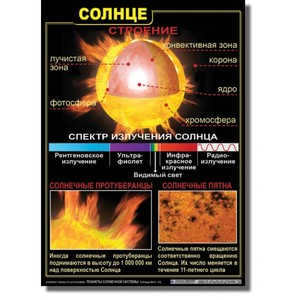
Measurement and Comparison of the Sun’s Mass
The Sun, which comprises 99.86% of the total mass in our star system, took nearly 5 billion years to form its massive size.
Scientists have developed three methods to accurately measure the mass of celestial bodies:
- Gravimetric Method. This method involves measuring the gravitational parameters of the celestial body’s surface.
- Kepler’s Third Law. This method is used when a planet has at least one satellite. The mass ratio between the planet and the star can be calculated by considering the distance and orbital period of the satellite.
- Using the geodetic method, we were able to determine the mass of our planet. It was calculated to be 6*10^24 kg.
- By applying Kepler’s Third Law, we derived the mass of the Moon to be 73477*10^22 kg.
- Lastly, we determined the mass of the Sun to be equivalent to 19891*10^30 kg.
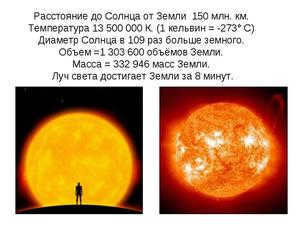
The mass of the Sun has become an abstract unit of measurement. Astronomers use it to describe various celestial objects. The largest known star, Eta Carinae, is estimated to be 150 times the mass of the Sun.
Scientists have made predictions about the future solar activity. Based on observations of other stars, they have concluded that the Sun will gradually deplete the energy of its photosphere. As a result, its size will expand dramatically. The closest planets, Mercury and Venus, will be engulfed. It is possible that the Earth will suffer the same fate. The Sun will transform into a Red Giant, experiencing a period of growth followed by a catastrophic contraction. Eventually, it will shrink to approximately the size of the Earth’s present size, and will be classified as a White Dwarf.
Video
Discover a wealth of fascinating information about the size of celestial bodies in our solar system from our video.
How big is the Sun?
The Sun plays a crucial role in the Milky Way Galaxy as well as in our solar system. It is surrounded by various celestial bodies such as planets, moons, asteroids, comets, and cosmic dust. Many people wonder about the size of the Sun and whether it is much larger than the Earth. In this article, we will explore the answer to this question.
Based on its spectral classification, our natural satellite belongs to the group of yellow dwarfs. It possesses the following characteristics:
- Object type – G2V;
- The average density is 1.4 grams per cubic centimeter, which is 1.4 times greater than that of water;
- The effective surface temperature of the sun is 5,780 K, resulting in a nearly white luminosity. However, when observed from Earth’s surface, it appears yellow due to the excessive scattering and absorption of a specific part of the short wavelength spectrum;
- The composition of the object includes hydrogen (92% by volume), helium (7%), iron, sulfur, carbon, silicon, and other elements;
- The solar spectrum is composed of ionized and neutral lines of metals, as well as helium and hydrogen.
- The total number of luminaries in the galaxy is estimated to be between 100 and 400 billion, with 85% of them being stars that are less bright than the Sun.
Solar radiation serves as the primary source of energy on Earth. As it passes through the Earth’s atmosphere, radiation loses approximately 370 watts of energy per square meter.
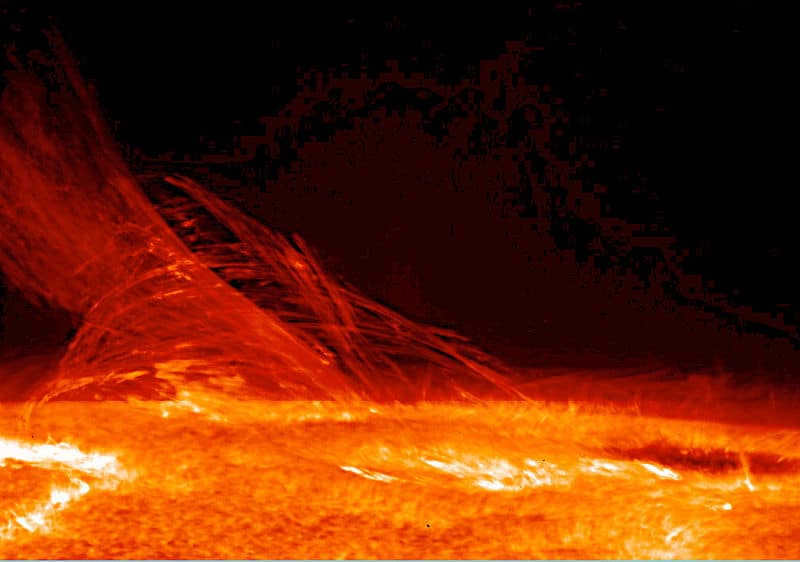
An image of the Sun’s surface and corona was captured by the Solar Optical Telescope (SOT) aboard the Hinode satellite on January 12, 2007.
Mass
The Sun’s size is determined by its mass, which is approximately 1.98892 * 10^30 kg. If you represent this value using zeros, it would consist of 25 zeros. To put it into perspective, the Sun is 333 thousand times larger than the Earth, 1,048 times larger than Jupiter, and 3,498 times larger than Saturn. However, practical observations have shown that the size of the Sun decreases over time, which can be attributed to two factors:
- The nuclear reactions occurring in its core, which convert hydrogen atoms into helium.
- The solar wind, which blows protons and electrons into outer space.

The physical attributes of the Sun
Size
The size of the Sun measures 1.391 million kilometers or 870,000 miles. When we compare this to the Earth, we find it to be 109 times larger, and in comparison to Jupiter, it is 9.7 times larger. Despite its immense size, the Sun’s diameter is still much smaller than other celestial bodies. For instance, when compared to the largest star, the Sun’s diameter is 2,100 times smaller.
The Sun has a radius of 695.5 thousand kilometers, which is measured from its exact center to its surface. This measurement remains the same whether it is taken from the center to the equator or from the center to the poles of the Sun. However, it is important to consider the rotational speed of other celestial objects, as it can affect their radius. In miles, the Sun’s radius is approximately 432,000 units, making it 109 times larger than the radius of planet Earth.
The luminary requires 25 days to complete a single rotation on its axis, as its rotation speed is exceptionally sluggish. However, despite this slow rotation, the luminary maintains a spherical shape, with the distance from its center to the poles being equal to the distance from its center to the equator. Scientists have conducted various studies and put forth hypotheses, suggesting that stars in other galaxies may possess notable distinctions from our Sun.
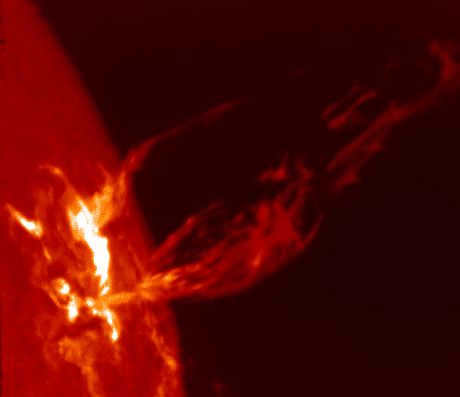
Coronal mass ejections occurring on the Sun are characterized by jets of plasma that stretch along the arches of the magnetic field.
Take, for instance, the celestial body ACHERNAR, which is 50% flattened and positioned within the region of the ERIDANUS constellation. This means that its distance from the poles is only half of the distance from its equatorial region. When compared to such celestial objects, the Sun appears to be a perfect sphere, distinct from a “wiggle” toy.
Astronomers utilize the radius of the Sun as a benchmark for comparing the sizes of stars and other astronomical entities. For example, a star with a radius of two solar radii would have dimensions ten times larger than that of the Sun. On the other hand, Polaris is the largest star, and due to its proximity to the north astronomical pole, it is regarded as a reference point for navigation purposes. It encompasses a staggering 30 solar radii within its structure.
Sirius, the second most luminous celestial body visible in the night sky, is renowned for its impressive magnitude. Notably, Sirius is a binary star system with a radius equivalent to 1.711 times that of the Sun.
Gravity
The gravitational force on the Sun is incredibly strong due to its enormous mass. In fact, the weight on the Sun is 333,000 times greater than that on Earth. Despite the high surface temperature of 5,800 Kelvin and the dominance of hydrogen in its composition, one can only imagine what it would feel like to walk on the solar surface. Especially considering that the gravity on the Sun is 28 times stronger than on Earth.
To put it simply, if someone weighed 100 kg on Earth, on the Sun it would feel like 2,800 kg. However, it is important to note that walking on the surface of the Sun is completely unrealistic! The Sun’s gravitational force is so intense that it pulls all mass towards its perfect center. As we approach the core, the temperature and pressure increase to such extreme levels that nuclear fusion is likely to occur.
Sun
The Sun serves as the focal point and origin of vitality for our solar system. This celestial body falls into the category of a yellow dwarf and encompasses a staggering 99.86% of the collective mass of our system, exerting its dominant gravitational force over all other astronomical objects. Since antiquity, humanity has recognized the profound significance of the Sun in sustaining life on Earth, hence why references to this luminous star can be found in the earliest written records and depicted in ancient rock art. It was revered as the supreme deity presiding over all.
Engaging Information
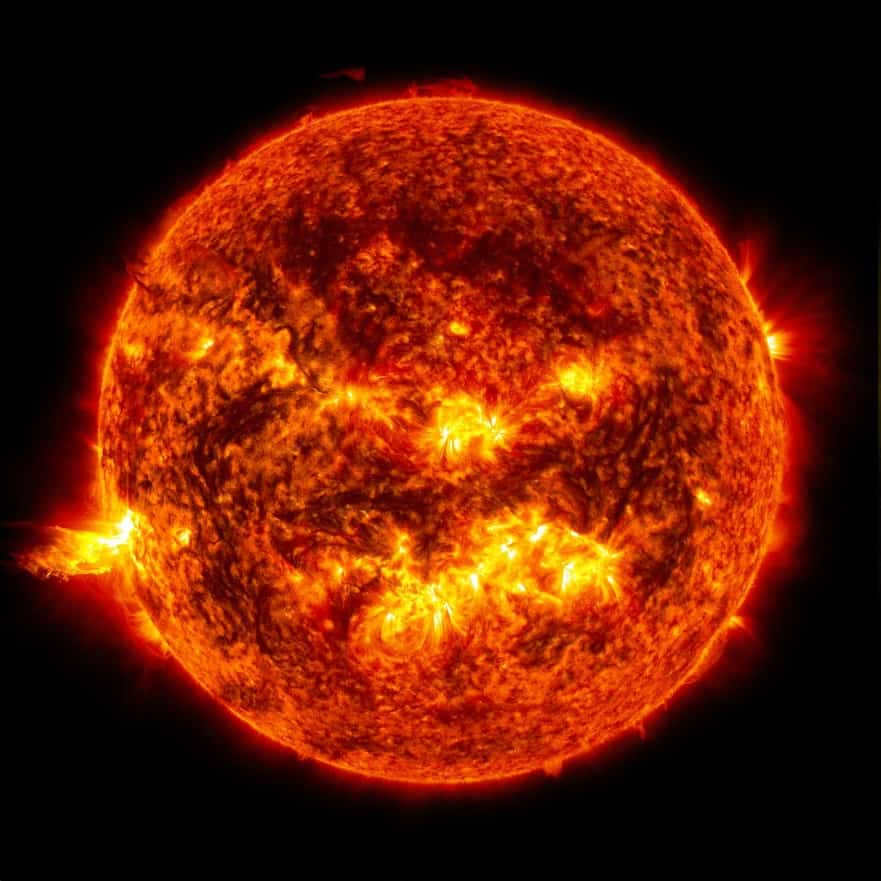
Let’s discover some fascinating information about the Sun, the solitary star in our solar system.
- If we were to fill up our star, the Sun, it could accommodate 960,000 Earths. However, if we compress them and eliminate free space, that number would increase to 1,300,000. The Sun’s surface area is 11,990 times larger than that of Earth.
- The Sun’s mass is 330,000 times that of Earth. Approximately 75% of its mass is composed of hydrogen, with the remaining being helium.
- The difference between the Sun’s equatorial and polar diameters is only 10 kilometers. Hence, we are observing one of the celestial bodies that closely resembles a sphere.
- Once the Sun exhausts its hydrogen supply (after approximately 130 million years), it will undergo a transformation and begin fusing helium. This process will cause the Sun to expand in size and engulf the first three planets in its path. This stage is known as the red giant phase.
- Following the red giant phase, the Sun will collapse and form a dense mass resembling an Earth-sized sphere. This marks the white dwarf stage.
- The distance between the Earth and the Sun is approximately 150 million kilometers. As the speed of light is 300,000 kilometers per second, it takes approximately 8 minutes and 20 seconds for light to travel from the Sun to Earth. It is also important to note that the journey of photons from the core of the Sun to its surface takes millions of years.
- The Sun is located approximately 24,000-26,000 light years away from the center of the galaxy. Therefore, it takes approximately 225-250 million years for the Sun to complete one orbit around the galactic center.
- The Earth’s orbital path is elliptical, resulting in a distance of 147-152 million kilometers (one astronomical unit).
- The Sun is approximately 4.5 billion years old, and it has already consumed about half of its hydrogen supply. However, this process will continue for another 5 billion years.
- Solar flares are particularly prominent during periods of magnetic storms. These flares manifest as the formation of sunspots, where magnetic lines twist and rotate similar to tornadoes on Earth.
- The solar wind consists of charged particles that travel throughout the entire solar system at a speed of 450 kilometers per second. This wind becomes visible where the Sun’s magnetic field extends.
- The term “Sunday” is derived from the Ancient Anglo-Anglian word meaning “south”. It also has roots in Gothic and Germanic languages. Prior to 700 AD, Sunday was referred to as “sunny day”. Translation has also contributed to its evolution. The original Greek phrase “heméra helíou” transformed into the Latin expression “dies solis”.
Characterization
The relative sizes of the Sun and the planets in the solar system are compared while also taking into account the distance between these celestial bodies.
The Sun is categorized as a G-type main-sequence star and possesses an absolute magnitude of 4.83, making it brighter than approximately 85% of the other stars within the galaxy. Many of these stars are considered to be red dwarfs. With a diameter measuring 696,342 kilometers and a mass of approximately 1.988 x 10^30 kilograms, the Sun is significantly larger than Earth, being 109 times its size, and also significantly more massive, with a mass that is 333,000 times greater.
As a star, the Sun’s density varies across its different layers. On average, the density is approximately 1.408 g/cm^3. However, as one progresses closer to the core, the density increases significantly to approximately 162.2 g/cm^3, which is approximately 12.4 times greater than that of Earth.
Characteristics of the Sun’s Physical Composition
The Sun is composed primarily of plasma, giving it a strong magnetic field. It possesses both north and south magnetic poles, with the surface layer exhibiting various patterns of magnetic activity. These patterns are often visible as dark spots, indicating cooler areas that undergo cyclical changes.
Coronal mass ejections and flares occur when the Sun’s magnetic field lines readjust. This process follows an 11-year cycle, during which solar activity waxes and wanes. The peak of activity is typically marked by the highest number of sunspots.
The Sun has an apparent magnitude of -26.74, making it approximately 13 billion times brighter than Sirius (-1.46). In terms of distance, the Earth is situated 150 million kilometers away from the Sun, which is equivalent to one astronomical unit (a.u.). It takes approximately 8 minutes and 19 seconds for a beam of light to travel this distance.
Composition and Structure
The star is composed primarily of hydrogen (74.9%) and helium (23.8%). It also contains trace amounts of heavier elements such as oxygen (1%), carbon (0.3%), neon (0.2%), and iron (0.2%). The star’s interior is divided into several layers including the core, radiative and convective zones, photosphere, and atmosphere. The core, which makes up 20-25% of the star’s total volume, has the highest density, measuring at 150 g/cm3.
The rotation of the star’s axis takes approximately one month, although this is a rough estimate due to the star’s plasma nature. Studies have shown that the core rotates faster than the outer layers. While the equatorial line completes one revolution in 25.4 days, it takes 36 days for the poles to complete a revolution.
The core of the star is where solar energy is generated through nuclear fusion, specifically the transformation of hydrogen into helium. Approximately 99% of the star’s thermal energy is produced in the core.
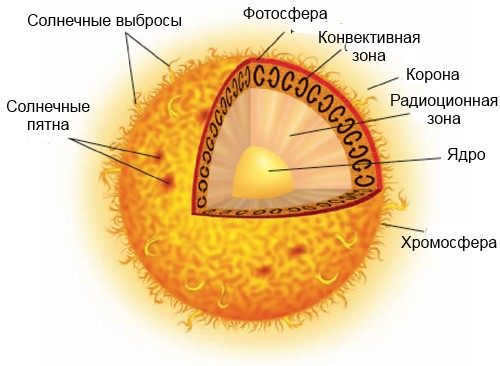
The Sun’s internal structure consists of different layers. The radiation zone, which extends from 0.25 to 0.7 of the solar radius, is characterized by a decrease in temperature as you move away from the core. The temperature ranges from 7 million K to 2 million K, while the density remains relatively constant, ranging from 20 g/cm3 to 0.2 g/cm3.
Between the radiation zone and the convective zone lies a transition layer known as the tacholine. This is where a significant change in rotation occurs, with the radiation zone exhibiting uniform rotation and the convective zone showing differential rotation. This difference in rotation leads to a major shift in the structure. The convective zone, located 200,000 km below the surface, has lower temperatures and density compared to the other layers.
The surface of the Sun, known as the photosphere, is the visible layer. It allows light to propagate into space, releasing solar energy. This layer is several hundred kilometers thick.
The heating of the upper part of the photosphere is not as effective as that of the lower part. The temperature reaches 5700 K and the density is 0.2 g/cm 3.
The Sun’s atmosphere consists of three layers: the chromosphere, the transition region, and the corona. The chromosphere extends over a distance of 2000 km. The transition region spans 200 km and heats up to temperatures between 20000-100000 K. This layer does not have clearly defined boundaries, but it is characterized by a halo with constant and chaotic motion. The corona reaches temperatures of 8-20 million K, influenced by the magnetic field of the Sun.

The Voyager 1 and 2 spacecraft have provided valuable data about the solar heliosphere.
The heliosphere, also known as the solar wind, is a magnetic sphere that extends beyond the heliopause, which is located 50 astronomical units away from the star.
Changes and the future
Scientists firmly believe that the Sun came into existence approximately 4.57 billion years ago as a result of the collapse of a portion of a molecular cloud composed mainly of hydrogen and helium. Simultaneously, the Sun began to rotate due to its angular momentum and started to heat up due to increasing pressure.
The majority of the mass was concentrated at the center, while the remaining material formed a disk that eventually gave rise to the planets in our solar system. The combination of gravity and pressure caused the temperature to rise and triggered nuclear fusion. This led to an explosive event, resulting in the birth of the Sun. The different stages of stellar evolution can be observed in the provided illustration.
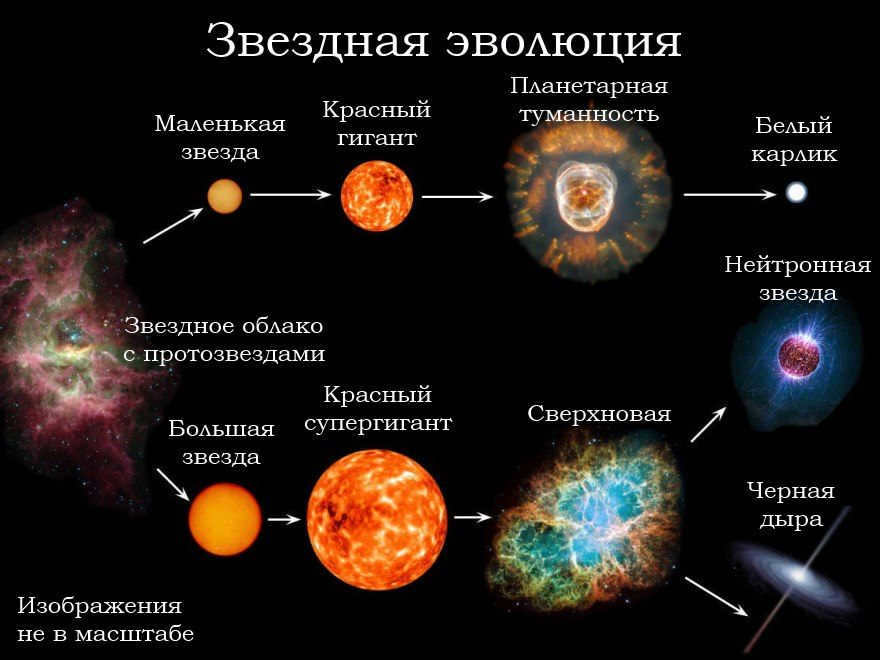
The star is currently in the main sequence stage, undergoing a process where more than 4 million tons of matter is being converted into energy within its core. The temperature is steadily rising as this transformation occurs. Analysis indicates that over the course of the past 4.5 billion years, the Sun has experienced a 30% increase in brightness, with a 1% rise occurring every 100 million years.
Scientists believe that in the future, the Sun will begin to expand and evolve into a red giant. As a result of this expansion, Mercury, Venus, and potentially Earth will cease to exist. The red giant phase is expected to last approximately 120 million years.
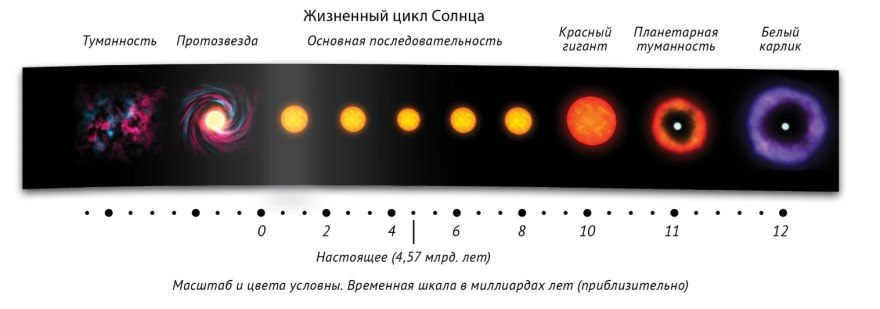
Subsequently, the sun will initiate the process of diminution in magnitude and temperature. It will proceed to incinerate the remaining helium in its core until it is completely depleted. After the passage of approximately 20 million years, its stability will diminish. Consequently, the fate of the Earth will be either annihilation or it will succumb to scorching conditions. In about 500,000 years, merely fifty percent of the solar mass will endure, while the outer layer will generate a nebula. Eventually, we will be left with a white dwarf that will persist for countless trillions of years before eventually transitioning into a black dwarf.
Position in the Milky Way
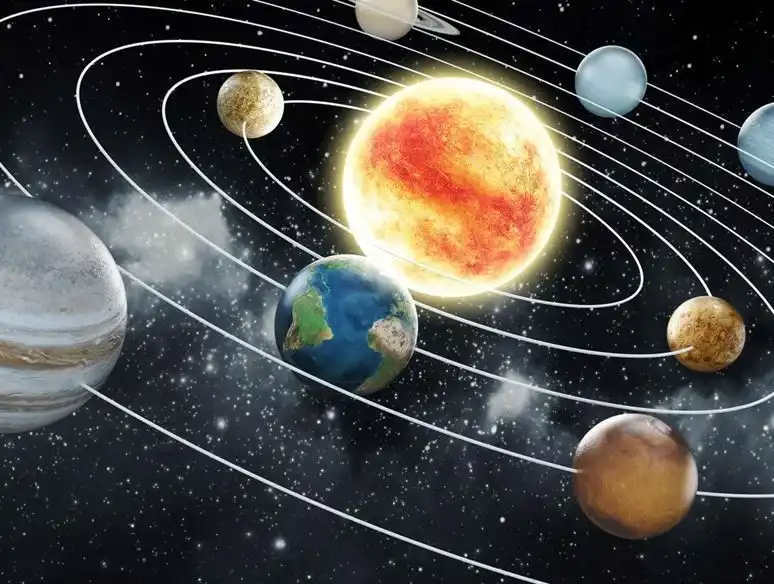
The position of the Sun in the Milky Way galaxy
The Sun is located closer to the inner side of the Orion arm within the Milky Way galaxy. Its distance from the center of the galaxy is approximately 7.5-8.5 thousand parsecs. It is situated within a local bubble, which is a void filled with glowing gas in the interstellar medium.
Within the galaxy, the solar system resides in a region known as the galactic habitable zone. This area possesses unique characteristics that are conducive to supporting life. The Sun’s movement is directed towards the Vega star in the Lyra constellation and is inclined at an angle of 60 degrees from the galactic center. Among the 50 closest star systems, our Sun ranks as the 40th most massive.
Map of the surface
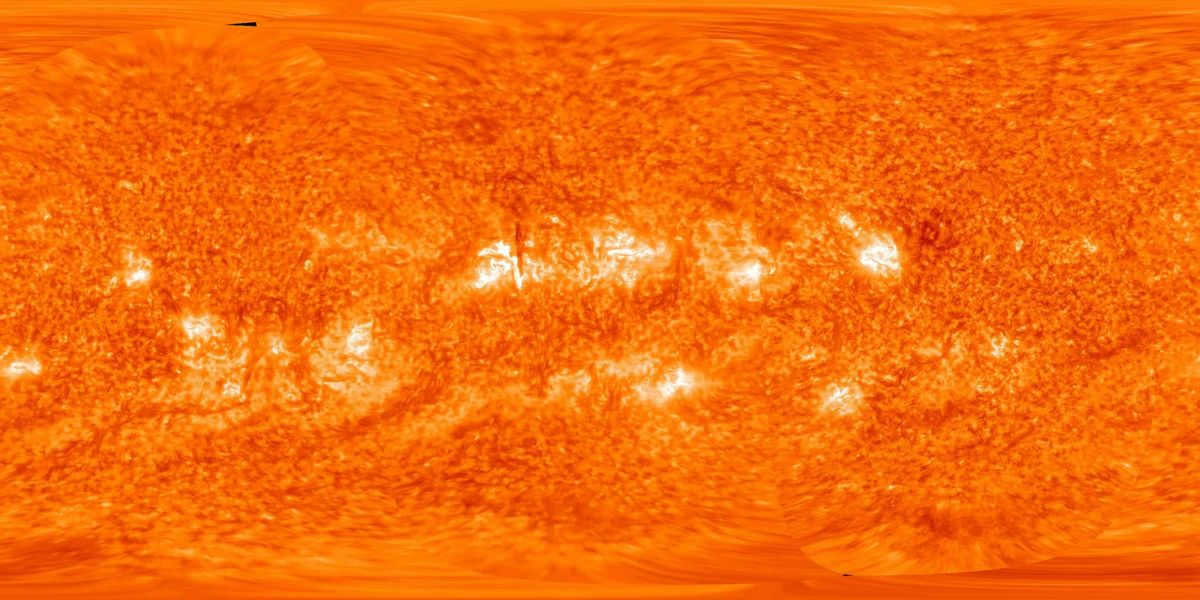
Click on the picture to expand it
The Sun is an immense luminous sphere of energy that is emitted from the core, where hydrogen is converted into helium, and the emitted energy is released into the vastness of space. The ancients worshiped this celestial body for a reason – it is thanks to its energy that life on our planet is maintained.
Characteristics of the Sun
Size
The Sun (Helios) is the nearest star to Earth. It falls under the classification of “Yellow Dwarfs”. Similar to other celestial bodies, Helios lacks a solid exterior. Its main layer is known as the photosphere, which emits energy. Consequently, the size of the Sun corresponds to the size of its photosphere.
Using a phenomenon known as “Bailey’s rosary,” scientists have successfully determined the precise diameter of the Sun in kilometers. These rosaries are red dots that appear along the circumference of the solar disk during an eclipse. By observing and analyzing these rosaries, astronomers have been able to accurately measure the size and position of the Sun.
Through the analysis of historical data and regular modern monitoring, astronomers have discovered that the diameter of the Sun is not constant and undergoes changes over time. For instance, in the 17th century, the Sun was 2,000 kilometers wider than its current size. Further research has revealed that the Sun goes through a cycle of expansion and contraction, with each cycle lasting approximately 160 minutes. This cycle also affects the amount of energy emitted by the Sun.

Determining the Size of the Sun
Scientists have been able to calculate the approximate radius of the Sun through a combination of methods. Measurements of solar eclipses and observations of the movement of Mercury and Venus against the solar disk provided an initial estimate of 695,990 kilometers.
Further refinements were made using instruments aboard space stations, specifically through the use of helioseismology. By studying the motion of f-waves on the Sun’s surface, scientists were able to obtain a slightly different value of 695,700 kilometers. It is important to note that this deviation in measurement could have significant implications for our understanding of the Sun’s composition and activity.
Regardless, it is understood that the Sun has a regular spherical shape, meaning its radius will be consistent in all directions.
Comparison of sizes of celestial bodies
In astronomy, the solar radius is used as a unit of measurement for the sizes of other cosmic objects:
- Polaris has a size of 30 solar radii, making it 30 times larger than the Sun.
- Our planet appears as a tiny dot in comparison to the main star, being 109 times smaller in size.
- However, the largest planet in the solar system, Jupiter, is only 9.7 times smaller than the Sun.
In the vast Universe, there are giant stars that surpass the size of our Sun by many times. The largest known star, VY Canis Majoris, is estimated to have a diameter of 2100 solar radii.

Measuring and Comparing the Mass of the Sun
The Sun, accounting for 99.86% of the total mass in our star system, took around 5 billion years to form.
There are three scientific methods available to measure the mass of celestial bodies:
- Gravimetric Method. This method utilizes gravity measurements to determine the characteristics of the body’s surface.
- Kepler’s Third Law. This method is used when a planet has at least one satellite. By considering the distance between the planet and its satellite, as well as the orbital period, the mass ratio between the planet and the star can be calculated.
- Using the geodetic method, scientists determined the mass of our planet to be 6*10 24 kg.
- Next, applying Kepler’s Third Law, we calculated the mass of the Moon to be 73477*10 22 kg.
- Lastly, we discovered that the mass of the Sun equals 19891*10 30 kg.

The weight of the Sun has become a conceptual unit of measurement. Astronomers employ this unit to describe various celestial objects. The most massive known star, Eta Carinae, is estimated to be 150 times the weight of the Sun.
Scientists have made a prediction about the future solar activity. Based on observations of other stars, they have deduced that the Sun will gradually deplete the energy of its photosphere. Its size will expand to an unprecedented extent. The closest planets, Mercury and Venus, will be engulfed. It is possible that the Earth will face the same destiny. The Sun will transform into a Red Giant. A period of expansion will be followed by a catastrophic contraction. The Sun will shrink to approximately the size of the Earth’s current state and will be known as a White Dwarf.
Video
Our video provides a wealth of fascinating information about the dimensions of various celestial bodies within our solar system.
Sun
The Sun serves as the focal point and life force of our solar system. This celestial body falls into the category of yellow dwarf stars and accounts for 99.86% of the total mass of our system, exerting its gravitational pull on all other heavenly bodies. Since ancient times, humanity has recognized the vital role of the Sun in sustaining life on Earth, leading to its depiction in early texts and rock art. It held a central position as a deity, reigning over all.

Let’s discover some fascinating information about our Sun, which happens to be the sole star in our solar system.
- If we were to fill up the Sun with Earths, we would be able to fit a staggering 960,000 of them inside. However, if we were to compress them and remove any empty space, that number would increase to 1,300,000. The Sun’s surface area is 11,990 times larger than that of the Earth.
- The Sun’s mass is a whopping 330,000 times greater than the Earth’s. Approximately three-quarters of its mass is composed of hydrogen, while the remaining portion is made up of helium.
- The difference in diameter between the Sun’s equator and poles is a mere 10 kilometers. This makes it one of the celestial bodies that closely resembles a perfect sphere.
- The Sun’s core reaches such extreme temperatures through fusion, a process in which hydrogen is converted into helium. While most hot objects would expand and potentially explode, the Sun is able to maintain its structure due to the powerful force of gravity. The surface temperature of the Sun is a relatively cooler 5780 °C.
- Once the Sun depletes its hydrogen supply (which will occur in approximately 130 million years), it will transition to using helium. This change will cause the Sun to expand, potentially engulfing the first three planets in its path. This phase is known as the red giant stage.
- Following the red giant stage, the Sun will collapse and leave behind a densely compressed mass resembling the size of Earth. This final stage is referred to as the white dwarf stage.
- The distance between the Sun and the Earth is approximately 150 million kilometers. The speed of light is about 300,000 kilometers per second, so it takes approximately 8 minutes and 20 seconds for sunlight to reach the Earth. However, it is important to note that it took millions of years for photons of light to travel from the core of the Sun to its surface.
- The Sun is located about 24,000-26,000 light years away from the center of our galaxy. As a result, it takes the Sun approximately 225-250 million years to complete one orbit around the galactic center.
- The Earth follows an elliptical orbit, so its distance from the Sun varies between 147-152 million kilometers (known as an astronomical unit).
- The Sun is approximately 4.5 billion years old, which means it has already consumed about half of its hydrogen fuel. However, this process will continue for another 5 billion years.
- Magnetic storms are often accompanied by solar flares, which manifest as the formation of sunspots. These sunspots are created when magnetic lines twist and rotate, resembling tornadoes on Earth.
- The solar wind is a continuous flow of charged particles that traverse the solar system, reaching speeds of 450 kilometers per second. This wind originates from the expansion of the Sun’s magnetic field.
- The term “solar” has its roots in the Ancient Anglo-Anglian language, where it meant “south”. It also has Gothic and Germanic origins. Prior to the year 700 AD, Sunday was referred to as “sunny day”. The word’s translation has also evolved over time, with the original Greek “heméra helíou” changing to the Latin “dies solis”.
The sizes of the Sun and the planets of the solar system can be compared. Additionally, the distances between objects on the Sun and the planets of the Solar System can be explored.
The Sun is categorized as a G-type main-sequence star and possesses an absolute magnitude of 4.83. This magnitude surpasses approximately 85% of the other stars in the galaxy, including red dwarfs. In terms of physical dimensions, the Sun has a diameter of 696,342 km and a mass of – 1.988 x 10 30 kg. These measurements make the Sun 109 times larger than Earth and 333,000 times more massive.
Since the Sun is a star, its density varies throughout its layers. On average, the density is 1.408 g/cm 3. However, as one moves closer to the core, the density increases to 162.2 g/cm 3, which is 12.4 times greater than that of Earth.
The color of the Sun that appears in the sky is yellow, but its actual color is white. The atmosphere is responsible for creating visibility. As you get closer to the center, the temperature rises. The core is heated to 15.7 million K, the corona to 5 million K, and the visible surface to 5778 K.
Physical characteristics of the Sun
Being made of plasma, the Sun possesses strong magnetism. It has both north and south magnetic poles, and the activity observed on the surface is formed by lines. The cool spots, known as dark spots, undergo cyclical changes.
Coronal mass ejections and flares occur when the magnetic field lines are adjusted. This cycle lasts for 11 years, during which the activity increases and then decreases. The maximum activity is associated with the highest number of sunspots.
The apparent magnitude of the Sun is -26.74, which is 13 billion times brighter than Sirius, a star with an apparent magnitude of -1.46. The distance between the Earth and the Sun is approximately 150 million kilometers, which is equal to one astronomical unit (1 a.u.). It takes about 8 minutes and 19 seconds for a ray of light to travel this distance.
Composition and structure
The Sun is primarily composed of hydrogen (74.9%) and helium (23.8%). It also contains trace amounts of heavier elements such as oxygen (1%), carbon (0.3%), neon (0.2%), and iron (0.2%). The interior of the Sun is divided into different layers, including the core, radiative zone, convective zone, photosphere, and atmosphere. The core, which has the highest density of approximately 150 g/cm^3, makes up about 20-25% of the Sun’s total volume.
The plasma ball, which is a star, has an estimated rotation period of one month. However, this is a rough approximation as the core of the star rotates faster than its outer layers. The equatorial line completes one revolution every 25.4 days, while it takes 36 days for the poles to complete a revolution.
Within the core of this celestial body, nuclear fusion occurs, converting hydrogen into helium and generating solar energy. It is in the core where almost 99% of the thermal energy is produced.

The Sun’s inner structure is composed of different zones. The radiation zone, which spans from 0.25 to 0.7 of the solar radius, is characterized by a decrease in temperature and density as you move away from the core. The temperature decreases from 7 million K to 2 million K, while the density decreases from 20 g/cm3 to 0.2 g/cm3.
Between the radiation zone and the convective zone lies a transition layer known as the tacholine. In this layer, there is a noticeable shift from the uniform rotation of the radiation zone to the differential rotation of the convective zone. The convective zone, which extends 200,000 km below the surface, also experiences lower temperatures and densities.
The outermost layer of the Sun is called the photosphere. This is the visible surface of the Sun, from which light can freely propagate into space, releasing solar energy. The photosphere has a thickness of several hundred kilometers.
The Sun’s atmosphere is composed of three distinct layers: the chromosphere, the transition region, and the corona. The chromosphere spans a distance of more than 2000 km, while the transition region is approximately 200 km in width. The temperature in the transition region can range from 20,000 to 100,000 K, and it is characterized by a halo of constant and chaotic motion. The corona, on the other hand, reaches temperatures of 8 to 20 million K, which are influenced by the Sun’s magnetic field.

The heliosphere, known as the solar wind, is a magnetic sphere that extends beyond the heliopause, which is located 50 astronomical units away from the star.
Development and the future
Scientists firmly believe that the Sun came into existence approximately 4.57 billion years ago as a result of the collapse of a portion of a molecular cloud composed mainly of hydrogen and helium. Simultaneously, it began to rotate due to angular momentum and underwent a heating process as pressure increased.
The majority of the mass was concentrated at the center, while the remaining material formed a disk that eventually led to the formation of the planets we are familiar with today. The combined forces of gravity and pressure caused an increase in temperature and nuclear fusion to occur. This eventually led to an explosion and the birth of the Sun. The stages of stellar evolution can be observed in the accompanying diagram.

Currently, the sun is going through the main sequence stage. Within its core, more than 4 million tons of matter are being converted into energy. The temperature is gradually rising. Research indicates that over the past 4.5 billion years, the Sun has experienced a 30% increase in brightness, with a growth rate of 1% every 100 million years.
It is hypothesized that in the future, the Sun will expand and evolve into a red giant. As a result of its size increase, Mercury, Venus, and potentially Earth will cease to exist. The red giant phase is expected to last approximately 120 million years.

Subsequently, the sun will initiate a process of contracting in size and decreasing in temperature. It will proceed to consume the remaining helium in its core until it is depleted. Once 20 million years have passed, its stability will be compromised. Either the Earth will be obliterated or it will be subjected to intense heat. In approximately 500,000 years, only half of the sun’s mass will remain, resulting in the formation of a nebula around its outer shell. Ultimately, we will be left with a white dwarf star that will persist for countless trillions of years before transitioning into a black dwarf.

The position of the Sun within the Milky Way galaxy is in the inner part of the Orion arm. It is approximately 7.5-8.5 thousand parsecs away from the galactic center. Interestingly, it is situated within a local bubble, which is a cavity in the interstellar medium with luminous gas.
Within the galactic habitable zone, where conditions are suitable for life, lies our solar system. This region possesses unique characteristics that can sustain life. The Sun’s movement is oriented towards Vega in the constellation Lyra and forms a 60-degree angle with the galactic center. Among the nearest 50 star systems, our Sun ranks as the 40th in terms of mass.
The elliptical shape of the orbital trajectory of our solar system is thought to be influenced by the gravitational forces exerted by the spiral arms of our galaxy. Each complete orbit takes approximately 225-250 million years, meaning that the solar system has completed only 20-25 orbits thus far. Below, you can observe a detailed map of the Sun’s surface. If you’re interested, you can even use our online telescopes to view the star in real-time. Additionally, be sure to keep an eye on the space weather, including magnetic storms and solar flares.
Map of the surface

Click the picture to see it larger
The Sun’s dimensions
The Sun is a prominent star in the Milky Way galaxy and the sole one in our solar system. It is surrounded by a perpetual circulation of various celestial objects such as planets, moons, dwarf planets, asteroids, meteoroids, comets, and cosmic dust. Many people wonder about the actual size of the Sun, assuming it is an enormous sphere surpassing the Earth in size. This article will provide an answer to this inquiry.
Based on the spectral classification, our natural star is classified as a yellow dwarf. It possesses the following characteristics:
- object type – G2V;
- the average density is 1.4 grams per cubic centimeter, which is 1.4 times higher than that of water;
- the effective temperature of the sun’s surface is 5,780 K, resulting in its nearly white radiance. However, when observed from Earth’s surface, its light appears yellow due to the scattering and absorption of shorter wavelengths in the spectrum;
- the composition of the sun includes hydrogen (92% of volume), helium (7%), iron, sulfur, carbon, silicon, and other elements;
- the sun’s spectrum contains lines from ionized and neutral metals, as well as helium and hydrogen.
- The galaxy contains between 100 and 400 billion luminaries, with 85% of them being stars that are dimmer than the Sun.
The Earth relies on solar radiation as its primary source of energy. As this radiation passes through the Earth’s atmosphere, it loses energy at a rate of 370 watts per square meter.

An image of the Sun’s surface and corona captured by the Hinode satellite’s Solar Optical Telescope (SOT) on January 12, 2007.
Size
The size of the Sun is determined by its mass, which is approximately 1.98892 * 10^30 kg. In terms of zeros, this value adds up to 25. The Sun is 333,000 times larger than the Earth, 1,048 times larger than Jupiter, and 3,498 times larger than Saturn. Observations suggest that the size of the Sun decreases over time, primarily due to two factors:
- The nuclear reactions occurring in its core, which convert hydrogen atoms into helium.
- The solar wind, which blows protons and electrons into space.

Physical attributes of the Sun
Size
The size of the Sun measures 1.391 million kilometers or 870,000 miles. In relation to the Earth, this equates to a ratio of 109, and in comparison to Jupiter, it is 9.7. Despite its vast dimensions, the Sun’s size is relatively small when compared to other celestial bodies. For instance, when compared to the largest star, the Sun’s diameter is 2,100 times smaller.
The Sun’s diameter measures 695.5 thousand kilometers, extending from its exact center to the surface. This measurement remains consistent whether taken from the center to the equator or to the poles. However, it is important to consider the rotational speed of other celestial bodies as it can impact their radii. In terms of miles, the Sun’s radius is equivalent to 432,000 units and is exactly 109 times greater than that of planet Earth.
In order for the celestial body to complete a single rotation on its axis, it will require a period of 25 days due to its remarkably slow rotation speed. Despite this, the celestial body remains spherical in shape, with the distance between its central region and the poles being equivalent to the distance from the center to the equator. Scientific research and theories suggest that within other galaxies, there exist stars that possess notable distinctions when compared to our Sun.

Coronal mass ejections occurring on the Sun. Streams of plasma are stretched along the magnetic field’s curves.
As an example, the star ACHERNAR is 50% flattened and can be found in the ERIDANUS constellation region. This means that its distance from the poles is half of its distance from the equator. When compared to these objects, the Sun appears to be a perfectly spherical shape, unlike a toy “wiggle”.
Astronomers use the Sun’s radius to compare the sizes of stars and other celestial bodies. For instance, a star with a radius twice that of the Sun would be 10 times larger in size. On the other hand, the polar star is the largest and, due to its proximity to the northern astronomical pole, is considered a reference point for navigation. It possesses a radius 30 times that of the Sun.





